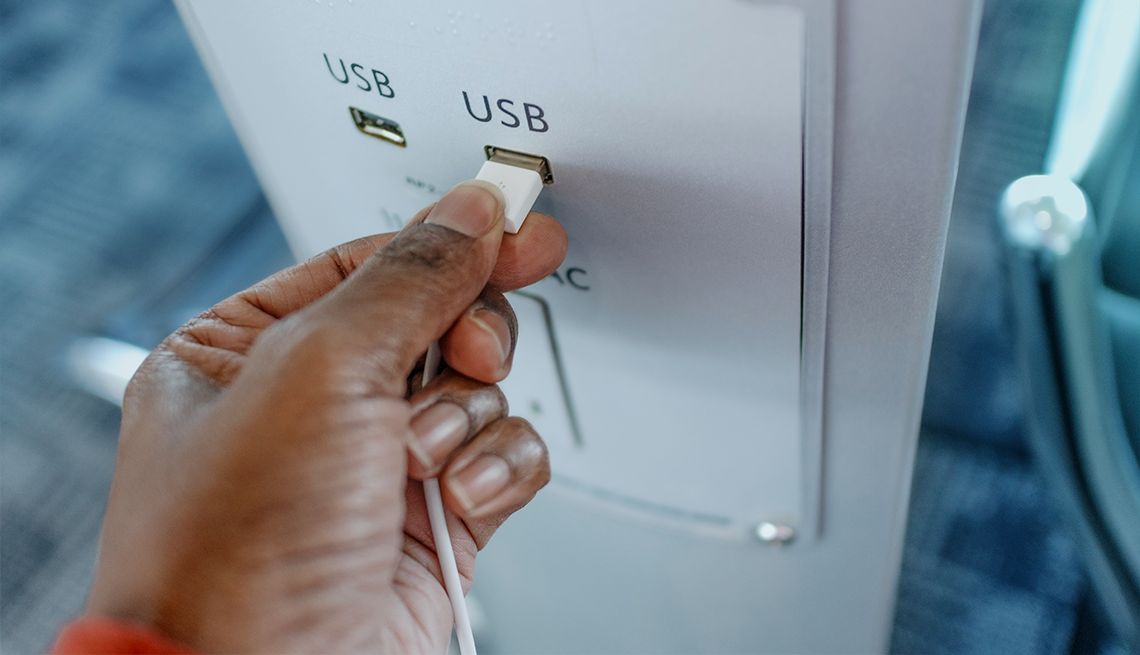
‘juice jacking’ raises concerns on malicious software
- Select a language for the TTS:
- UK English Female
- UK English Male
- US English Female
- US English Male
- Australian Female
- Australian Male
- Language selected: (auto detect) - EN
Play all audios:

“We have not received reports of malware being detected in airport USB ports,” says Rob Yingling, a spokesman for the Metropolitan Washington Airports Authority. JUICE JACKING IS
TECHNOLOGICALLY POSSIBLE Perhaps the earliest warning came at a 2011 Def Con hackers conference when cybersecurity company Aries Security built a charging kiosk to educate attendees about
the risks. In 2013, researchers compromised iPhones using malicious USB ports during a demonstration at the Black Hat cybersecurity conference, and in 2016 researchers confirmed a similar
vulnerability in some Samsung Android phones. But several security experts say they have yet to see the threat at public charging stations. In contrast, the FBI estimates that another type
of data hijacking, credit card skimming, costs consumers and financial institutions more than $1 billion every year. Thieves can steal your credit or debit card information by attaching
tough-to-see gadgets on ATMs, gas pumps and other locations where you insert your magnetic card into a machine. “I got annoyed by the FBI announcement [on juice jacking] because it lacked
any evidence that this is a widespread problem, let alone a problem at all,” says Chris Wysopal, cofounder and chief technology officer at the software-integrity firm Veracode in Burlington,
Massachusetts. His conversations with other security professionals have yet to surface cases of juice jacking. YOUR BEST DEFENSE? UPDATED SOFTWARE With up-to-date smartphone software,
experts consider the real risk minimal. “What the attacker is actually doing is exploiting a vulnerability on your phone,” says Melanie Ensign, a security adviser who helps run the Def Con
and Enigma security conferences. The vulnerability doesn’t live inside the USB port. 7 WAYS TO KEEP YOUR ELECTRONICS SAFE FROM JUICE JACKING 1. Tote your own charging cables. 2. Plug your
own charger into an electrical outlet. 3. Carry a backup battery pack. 4. Keep your operating system and apps up to date. 5. Lock your phone or turn it off before plugging it in at a public
charging station. 6. Don’t allow your device to share data while charging. 7. Consider using a USB data blocker cable if you need a public charging station. “The most important thing to do
is keep your software and firmware updated,” she says. That means the apps that let you find bargains, listen to music, navigate around town, play games or share on social media and the
operating system that runs your devices. The first choice for both Apple’s iOS and Google’s Android operating systems is to use a new Lightning or USB connection only for charging. If you
plug an iPhone into a random computer, it will display a dialog asking if you want to trust that device with DON’T TRUST highlighted in bold. Android phones show a Charging this device via
USB dialog, which you have to tap through to allow file transfers.
